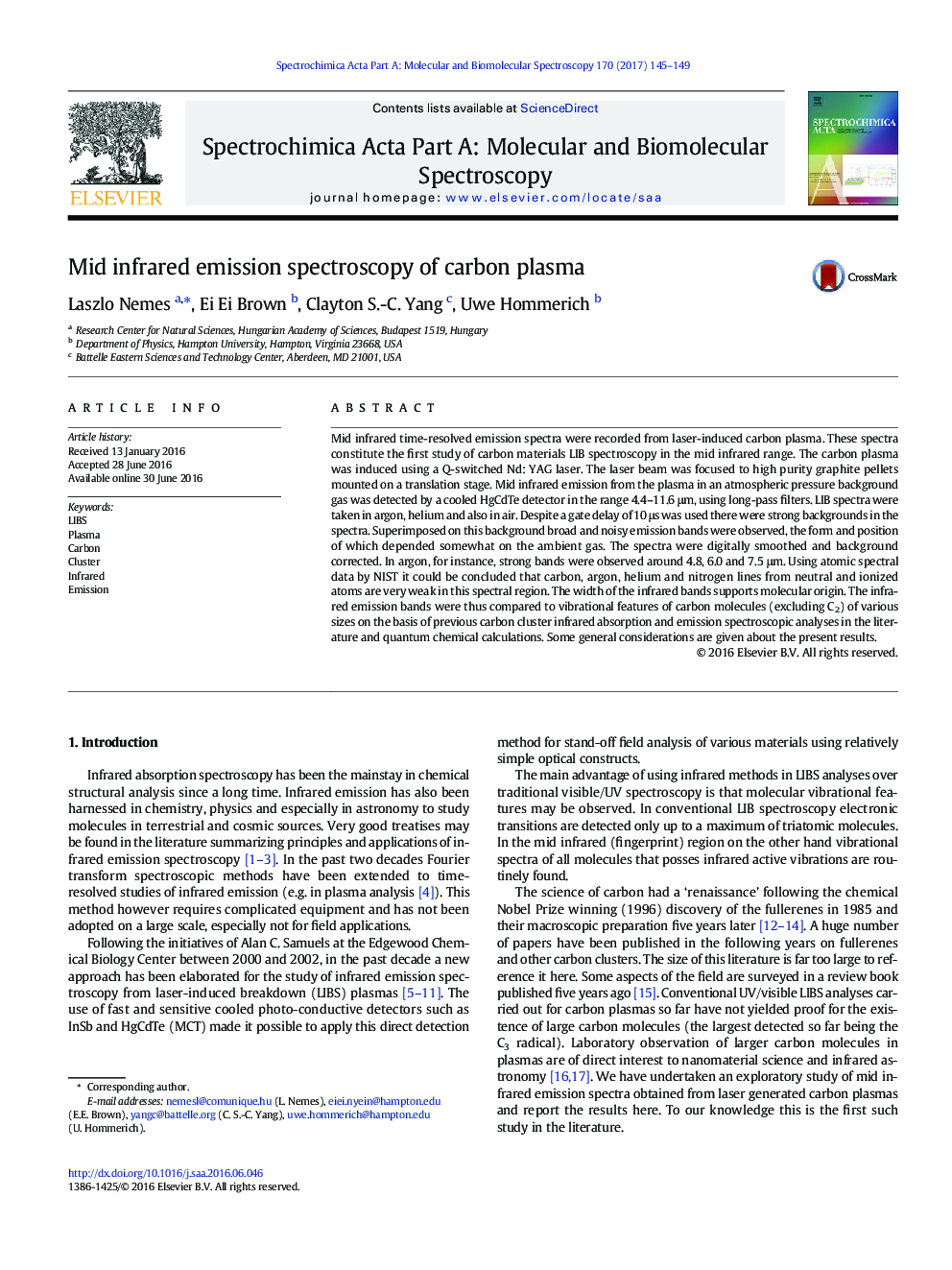| Article ID | Journal | Published Year | Pages | File Type |
|---|---|---|---|---|
| 1230801 | Spectrochimica Acta Part A: Molecular and Biomolecular Spectroscopy | 2017 | 5 Pages |
•Time resolved mid-IR emission spectra were recorded from laser generated carbon plasma.•De-noising and background correction of raw spectra revealed broad molecular bands.•Vibrational identification for linear and dehydrogenated PAH carbon molecules is suggested.•Comparison to thermal emission IR spectrum of C60 is made.•Possible origins of the spectral background in Ar and He gases are considered.
Mid infrared time-resolved emission spectra were recorded from laser-induced carbon plasma. These spectra constitute the first study of carbon materials LIB spectroscopy in the mid infrared range. The carbon plasma was induced using a Q-switched Nd: YAG laser. The laser beam was focused to high purity graphite pellets mounted on a translation stage. Mid infrared emission from the plasma in an atmospheric pressure background gas was detected by a cooled HgCdTe detector in the range 4.4–11.6 μm, using long-pass filters. LIB spectra were taken in argon, helium and also in air. Despite a gate delay of 10 μs was used there were strong backgrounds in the spectra. Superimposed on this background broad and noisy emission bands were observed, the form and position of which depended somewhat on the ambient gas. The spectra were digitally smoothed and background corrected. In argon, for instance, strong bands were observed around 4.8, 6.0 and 7.5 μm. Using atomic spectral data by NIST it could be concluded that carbon, argon, helium and nitrogen lines from neutral and ionized atoms are very weak in this spectral region. The width of the infrared bands supports molecular origin. The infrared emission bands were thus compared to vibrational features of carbon molecules (excluding C2) of various sizes on the basis of previous carbon cluster infrared absorption and emission spectroscopic analyses in the literature and quantum chemical calculations. Some general considerations are given about the present results.
